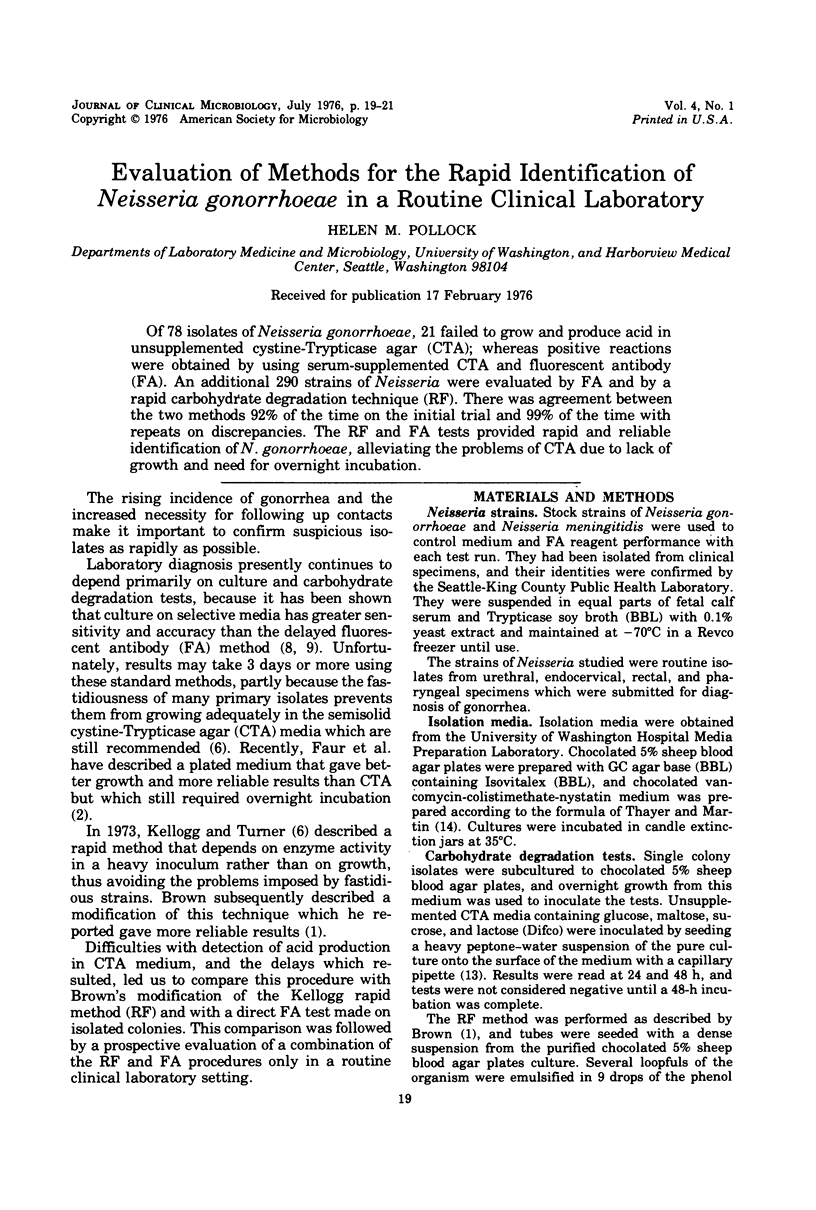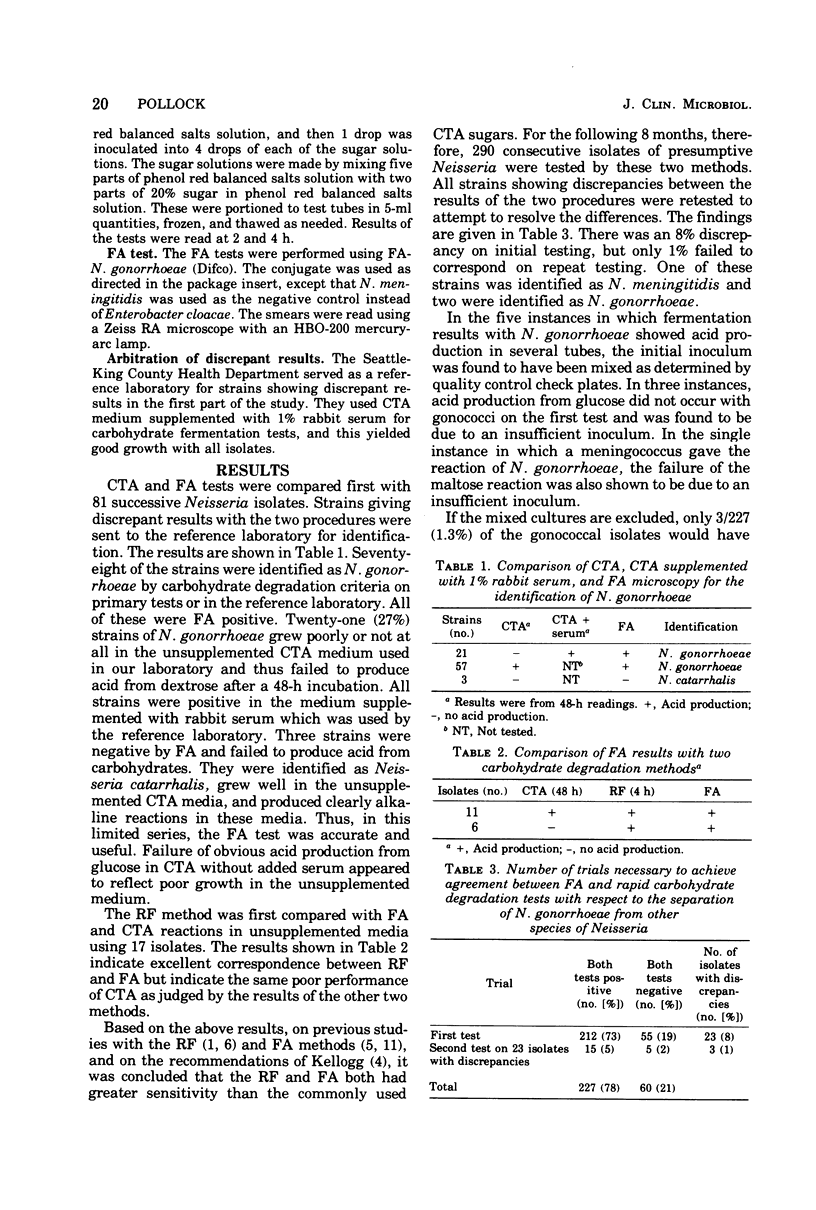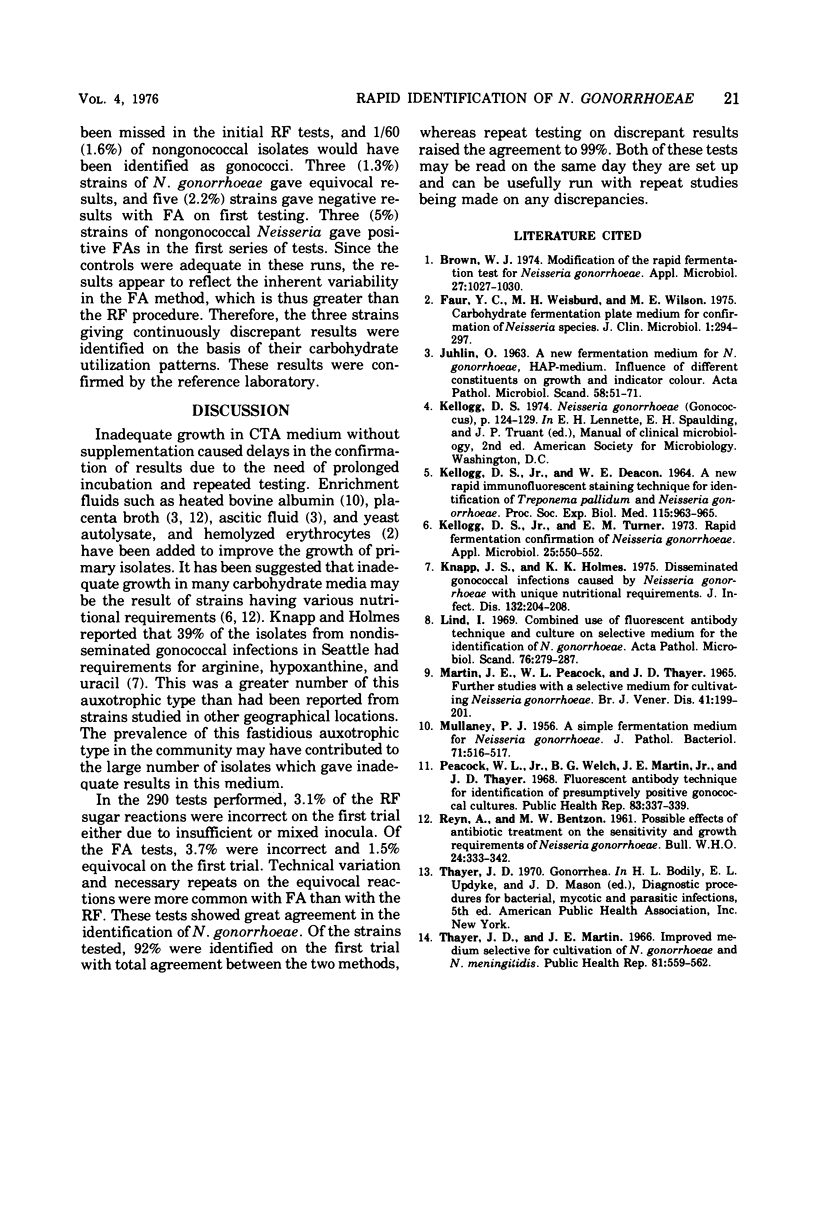Abstract
Of 78 isolates of Neisseria gonorrhoeae, 21 failed to grow and produce acid in unsupplemented cystine-Trypticase agar (CTA); whereas positive reactions were obtained by using serum-supplemented CTA and fluorescent antibody (FA). An additional 290 strains of Neisseria were evaluated by FA and by a rapid carbohydrate degradation technique (RF). There was agreement between the two methods 92% of the time on the initial trial and 99% of the time with repeats on discrepancies. The RF and FA tests provided rapid and reliable identification of N. gonorrhoeae, alleviating the problems of CTA due to lack of growth and need for overnight incubation.
Full text
PDF


Selected References
These references are in PubMed. This may not be the complete list of references from this article.
- Brown W. J. Modification of the rapid fermentation test for Neisseria gonorrhoeae. Appl Microbiol. 1974 Jun;27(6):1027–1030. doi: 10.1128/am.27.6.1027-1030.1974. [DOI] [PMC free article] [PubMed] [Google Scholar]
- Faur Y. C., Weisburd M. H., Wilson M. E. Carbohydrate fermentation plate medium for confirmation of Neisseria species. J Clin Microbiol. 1975 Mar;1(3):294–297. doi: 10.1128/jcm.1.3.294-297.1975. [DOI] [PMC free article] [PubMed] [Google Scholar]
- KELLOGG D. S., Jr, DEACON W. E. A NEW RAPID IMMUNOFLUORESCENT STAINING TECHNIQUE FOR IDENTIFICATION OF TREPONEMA PALLIDUM AND NEISSERIA GONORRHOEAE. Proc Soc Exp Biol Med. 1964 Apr;115:963–965. doi: 10.3181/00379727-115-29090. [DOI] [PubMed] [Google Scholar]
- Kellogg D. S., Jr, Turner E. M. Rapid fermentation confirmation of Neisseria gonorrhoeae. Appl Microbiol. 1973 Apr;25(4):550–552. doi: 10.1128/am.25.4.550-552.1973. [DOI] [PMC free article] [PubMed] [Google Scholar]
- Knapp J. S., Holmes K. K. Disseminated gonococcal infections caused by Neisseria gonorrhoeae with unique nutritional requirements. J Infect Dis. 1975 Aug;132(2):204–208. doi: 10.1093/infdis/132.2.204. [DOI] [PubMed] [Google Scholar]
- Lind I. Combined use of fluorescent antibody technique and culture on selective medium for the identification of Neisseria gonorrhoeae. Acta Pathol Microbiol Scand. 1969;76(2):279–287. doi: 10.1111/j.1699-0463.1969.tb03258.x. [DOI] [PubMed] [Google Scholar]
- MULLANEY P. J. A simple fermentation medium for Neisseria gonorrhoeae. J Pathol Bacteriol. 1956 Apr;71(2):516–517. doi: 10.1002/path.1700710226. [DOI] [PubMed] [Google Scholar]
- Martin J. E., Jr, Peacock W. L., Jr, Thayer J. D. Further studies with a selective medium for cultivating Neisseria gonorrhoeae. Br J Vener Dis. 1965 Sep;41(3):199–201. doi: 10.1136/sti.41.3.199. [DOI] [PMC free article] [PubMed] [Google Scholar]
- Peacock W. L., Jr, Welch B. G., Martin J. E., Jr, Thayer J. D. Fluroescent antibody technique for identification of presumptively positive gonococcal cultures. Public Health Rep. 1968 Apr;83(4):337–339. [PMC free article] [PubMed] [Google Scholar]
- REYN A., BENTZON M. W. Possible effects of antibiotic treatment on the senstivity and growth requirements of Neisseria gonorrhoea. Bull World Health Organ. 1961;24:333–342. [PMC free article] [PubMed] [Google Scholar]
- Thayer J. D., Martin J. E., Jr Improved medium selective for cultivation of N. gonorrhoeae and N. meningitidis. Public Health Rep. 1966 Jun;81(6):559–562. [PMC free article] [PubMed] [Google Scholar]


